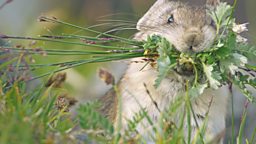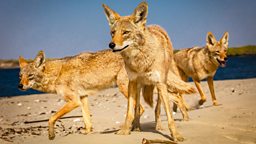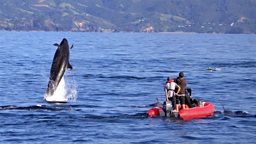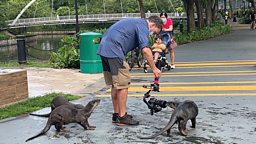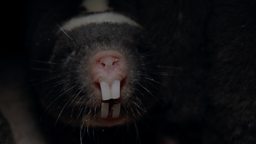Giving a voice to the plight of howler monkeys
By M.Sc. Inés Azofeifa Rojas, primatologist and researcher at SalveMonos, Costa Rica

My adventure of a lifetime began in 2015 when I was asked to follow the tree-top lives of Costa Rica’s gravity-defying howler monkeys (Alouatta palliata palliata).
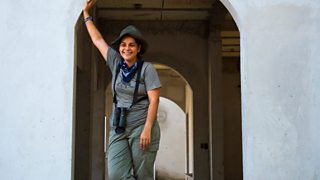
At first it was just a call to investigate the howlers' routes in the community of Playa Hermosa, Guanacaste but it went beyond this, learning their behaviour and understanding their daily routine led me to dedicate a large part of my time to the conservation of the species.
Howler monkeys are a New World primate that have specialized in the forest canopy, feeding largely on young or mature leaves (75%) and complementing it with flowers, fruits and seeds (25%). They are very smart and intelligent, they can readily adapt to changes from the rainy season to the dry season in the tropical dry forest, distributing the available food resource by traversing the forest canopy. They are a social species, with caring interactions, including mutual grooming, protection and play commonly observed during monitoring.
Their evolution led them to remain strictly in the treetops. They rarely descend to the ground, usually only when forced to do so to complete tree top routes that no longer exist. And this is one of the great threats that the howler monkey faces as a species. The deforestation, modification and degradation of its habitat has led it to be a species resilient to change. And today we can find them using cables, crossing roads, and moving over buildings to achieve their daily journeys.
Urban growth due to tourism on the coasts of Costa Rica has put the survival of the howler troops at risk. Now, every day, a howler monkey is electrocuted using cables and wiring to travel through towns and villages, where it receives an electric shock if it touches power lines. They are attacked by dogs when they move on the ground to cross from one tree to another or run over by cars as they try to complete their foraging routes.

This has been one of the things that has made me most sensitive as a person, as an individual, as a human. As a researcher, I went from seeing howler monkeys in their natural environment, fulfilling their ecological role, to seeing them injured with severe burns from electrocution, to seeing them dying. Losing those forest spirits led me to work tirelessly to solve this problem. In the last 4 years, I have personally witnessed more than 100 monkeys lose their lives while we transfer them to veterinary care or to a rescue center .It is very frustrating to see this loss of life because of our actions.

We have focused efforts on prevention, implementing measures such as insulated and underground cables, wildlife passages, rope bridges, controlled pruning to prevent access to lines and creating safe paths for monkeys. It is impressive how the howlers are so intelligent, I could even say that they use reason, when seeing them implement the use of wildlife crossings, because they know that they are safe structures, more so than cables. To the point that we have managed to stop up to 90% of them using the cables in the communities where we work. The intelligence they show is what motivates me to continue working to offer them better conditions as real estate development increases.
I had the great opportunity to help bring this story and these amazing mammals to the screen. To do so I filmed with the 麻豆社 Mammals team across two 2 field periods in two different years (2022-2023).
We first filmed in the community of Playa Hermosa, where the howler troops have been studied for more than 7 years. Here we focused on filming them on the cables and on the specially constructed aerial wildlife crossings. We waited for many hours in the extreme heat and humidity of Guanacaste for the monkeys to complete their travels along the deadly cables.

As well as this we filmed the howlers in the middle of the dry forest, with a leafless canopy, a spectacle of flowers and limited water resources. Here the crew faced several challenges such as high temperatures and a strong sun.

For me, the biggest challenge as a researcher during filming was being able to predict the passage routes and the movements that the troops made. But, nevertheless, the knowledge acquired over the past few years did not fail me. I was able to locate the troops and predict the movements most of the time for filming and this is only achieved by understanding how the monkeys use the resources of the forest and trees. So, it was a great experience to test my knowledge, but also an opportunity to reaffirm the connection I have made with the howlers.
For the film crew one of their greatest challenges during the filming of the howlers was to position themselves at the same level as them. Placing themselves at the same eye line where the howlers are carrying out their daily movements - just imagine living more than 20 meters from the ground, trying not to fall and moving along a tightrope as in the case of cables in communities. It was really impressive.
We concentrated on going to the top of the canopy equipped with the latest technology and using cable cameras, drones and specialist rope access teams to capture the howlers from the same line of sight, with a spectacular results.
During filming we observed very interesting behaviours between individuals. Spending more than a month in the field allowed us to understand the daily life of these living beings. Behaviours such as submission between females, showing hierarchy to their alpha female, the paternal care of the alpha male towards young, dispersing pollen from flower to flower with their mouths and interactions with other species such as falcons trying to feed on the young of howlers. These were just some of the new things that I observed, inspiring me even more to continue my work.

Being able to immerse myself in the forest to understand the howlers’ behaviour, understanding them as a species, has been for me, the way to reconnect with the origin of our species and internalize that we are so equal to them, that we all have the right to coexist in the environment, each of us with a very important biological role. and to see ourselves as an equal, in the same line of existence, without superiorities, without anthropocentrism.
this opportunity has been to be able to give a voice to the howlers about what is happening in their habitat
When I was a child, my dad took us to see the howler monkeys near a lagoon where they always rested, and the alpha male would vocalise whenever we arrived. I always dreamed of being a researcher and being able to record a documentary in the field. What I never imagined was that this would be possible and even better, that I could bring a message to the world about what happens to monkeys, like giving a voice to that howler that I visited with my family in the lagoon. For me, this opportunity has been to be able to give a voice to the howlers about what is happening in their habitat, how they are losing individuals every day in electrocutions and how we must act now to not lose the howl of the forest.

Howler monkeys risk electrocution
In South America, howler monkeys risk their lives climbing on overhead electricity cables.











